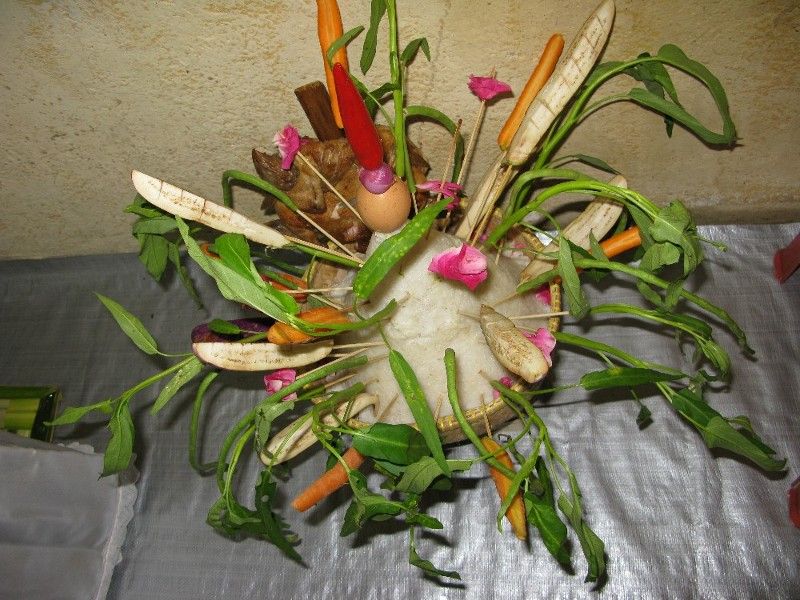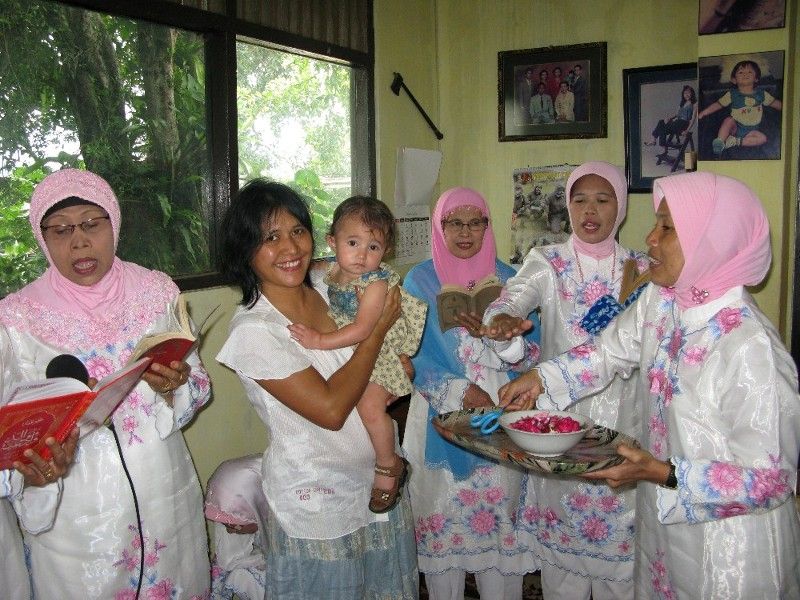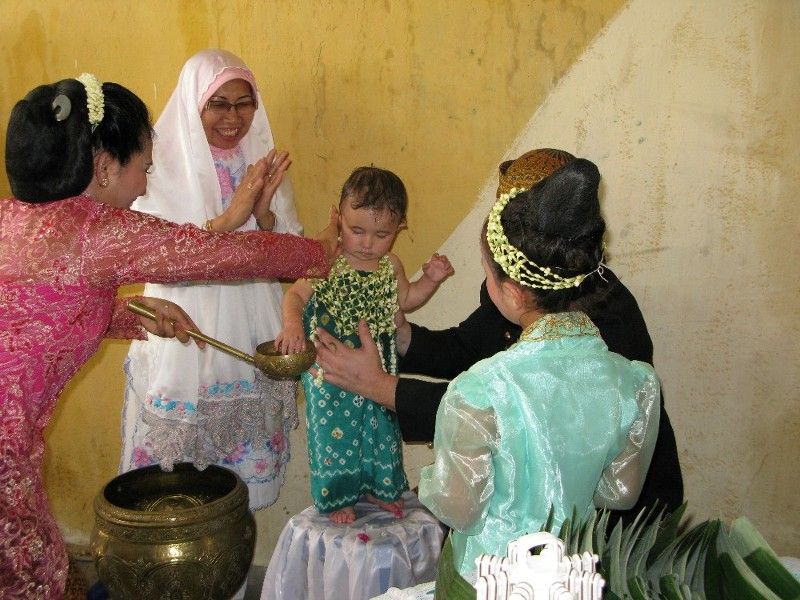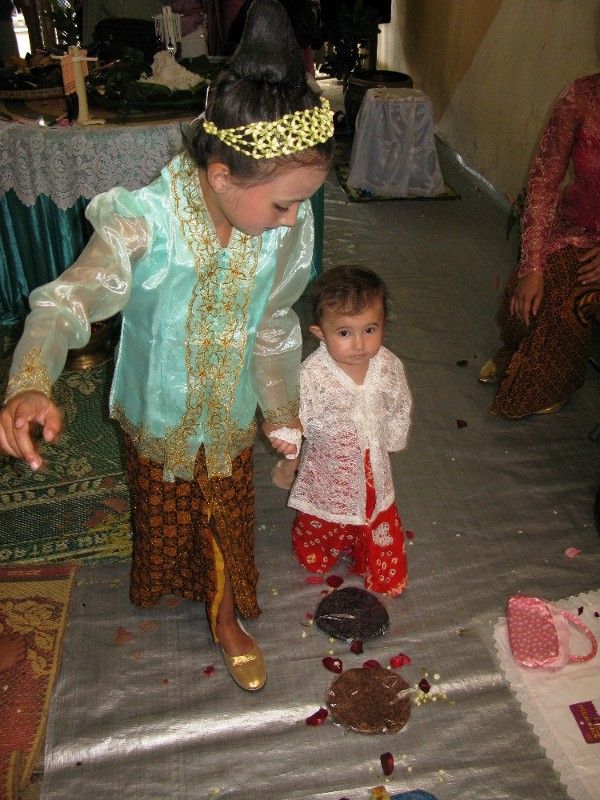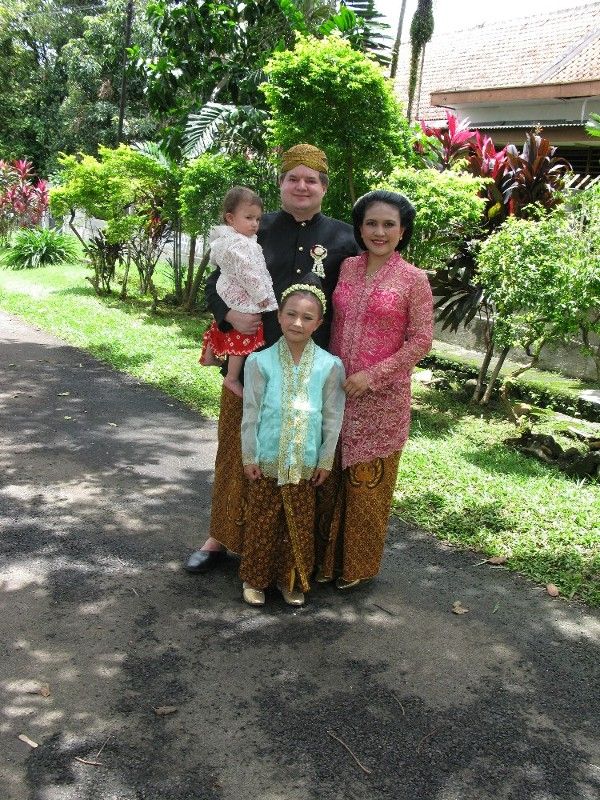Tedak Siten Ceremony: Ritual of Stepping Foot on Earth.
Tedak means to step, to set foot.
Siten (Siti) means soil, earth.
Tedak Siten means to set foot on earth.
This ritual illustrates that the little child is ready to start a successful life, with God's blessing and with the guidance from his or her parents.
This traditional ceremony is performed when a child is seven Selapan which is 245 days (Selapan is 35 days). There are five Pasaran (market) days in one Selapan: Legi, Pahing, Pon, Wage en Kliwon. Every day is therefore named differently in one Selapan period. One period from Sunday Legi to Saturday Kliwon is 35 days. That's named Weton in Javanese. For a Javanese to know his/her weton day is important.
| Sunday Legi | Monday Pahing | Tuesday Pon | Wednesday Wage | Thursday Kliwon |
| Friday Legi | Saturday Pahing | Sunday Pon | Monday Wage | Tuesday Kliwon |
| Wednesday Legi | Thursday Pahing | Friday Pon | Saturday Wage | Sunday Kliwon |
| Monday Legi | Tuesday Pahing | Wednesday Pon | Thursday Wage | Friday Kliwon |
| Saturday Legi | Sunday Pahing | Monday Pon | Tuesday Wage | Wednesday Kliwon |
| Thursday Legi | Friday Pahing | Saturday Pon | Sunday Wage | Monday Kliwon |
| Tuesday Legi | Wednesday Pahing | Thursday Pon | Friday Wage | Saturday Kliwon |
Preparations
Usually the ritual is organized in the morning in the front yard of the house. Except the parents and the family, some elderly people also present to give their blessing to the child. The required sajen / offering symbolizes a prayer to God to receive His blessing and protection, to receive blessings from the ancestors, to get protection from evil and to ensure that the ritual ceremony can be held in a good and safe atmosphere.
After the preparations have been done, the family (the parent, the child, and the relatives) and invitees gather together at the place of the ceremony.
MoreSelamatan
A traditional religious feast. The word Selamatan expresses the notions of thanksgiving, blessing, and grace. At the same time, a Selamatan is not really a religious feast. Although prayers may be said and a passage read or chanted from the Qur’an, this is something that goes back a long time before the arrival of Islam. The Selamatan is partly a way of expressing family and neighbourhood solidarity - very important in Indonesia - and partly a way of seeking or keeping the protection of unseen powers. Through the sharing of ritual food, prayers, and fellowship in a Selamatan, the Javanese frequently perform a ritual that demonstrates their belief that they can and should maintain order and constrain dangerous disorder.
MoreSiraman Rituals
The baby is bathed or cleaned with « setaman» flowers: roses, jasmines, magnolias and canangas. This ritual represents hope that the baby will bring respect, honour, and fame to the family.
MoreTurun Tanah Rituals
The baby is guided to walk on a path of 7 different colours (red, white, orange, yellow, green, blue, and violet) of glutinous rice plates, or jadah or tetel. They are made from glutinous rice, mix with young coconut grating and a pinch of salt. The colour of these plates symbolizes different steps in life. They are arranged from darker colour to brighter colour. The baby must step from the darker plate to the brighter plate, from darkness in life to clarity. The child will be able to overcome all obstacles in life.
MoreFamily and Guests
At the end, the baby is dressed neatly with beautiful and new dresses. This represents hope that the baby should always have a good and prosperous life, and he/she can make the parents to live happily.
More